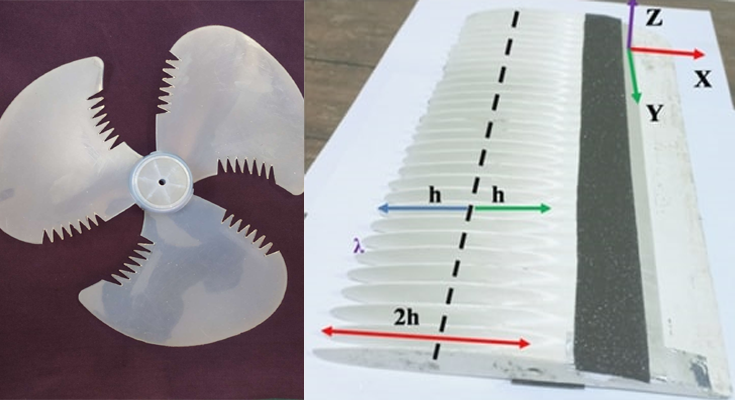Dhanbad: In a groundbreaking development, researchers from IIT (ISM) have unveiled a revolutionary design for next-generation airfoils aimed at significantly reducing aircraft noise. Led by Dr. Subramanian Narayanan, an Associate Professor in the Department of Mechanical Engineering, the team’s innovative approach draws inspiration from the biomimicry of barn owl wings.
The project, supported by the DST, marks a significant advancement in aerodynamic technology. By incorporating wavy leading edge (LE) and trailing edge (TE) designs, the researchers have achieved remarkable reductions in broadband airfoil noise compared to traditional serrated airfoils. These advancements are crucial not only for aircraft wings but also for applications in wind turbine blades, fan blades, and open rotors.
Explaining the design principles, Professor Narayanan highlighted the dual use of serrations: “The wavy serrations at both the leading and trailing edges of NACA airfoils work synergistically to reduce far-field acoustic radiation across a wide range of frequencies. This combined approach, previously unexplored, represents a pioneering step towards comprehensive noise reduction.”
Elaborating further, Professor Narayanan discussed the specific noise-reducing benefits of leading edge and trailing edge serrations. “Leading edge serrations mitigate airfoil turbulence interaction noise, while trailing edge serrations minimize self-noise emissions,” he explained.
Initial studies have shown promising results, with up to 4 decibels reduction in noise levels across different frequency ranges. Professor Narayanan expressed optimism about the project’s outcomes: “Through rigorous theoretical and experimental analysis, we have successfully controlled and minimized total broadband noise, encompassing both interaction and self-noise components.”
Looking ahead, the team is focused on developing even more advanced airfoil designs incorporating biomimetic features such as shark dermal denticles, riblets, and dimples. These features are expected to further enhance noise reduction capabilities when integrated with wavy LE and TE serrations.
“This is just the beginning,” Professor Narayanan affirmed. “Our ongoing efforts aim to push the boundaries of aerodynamic noise reduction, paving the way for quieter and more efficient aircraft technologies.”
The research underscores IIT (ISM)’s commitment to cutting-edge engineering solutions and its pivotal role in advancing aerospace innovation. As the team continues to refine their designs, anticipation grows for the broader implications of their pioneering work in noise reduction technology.




